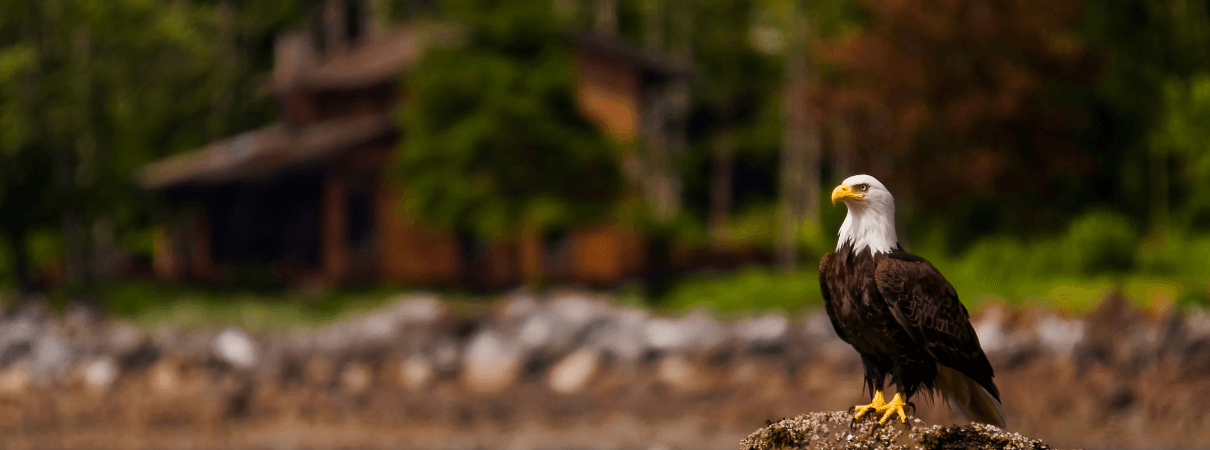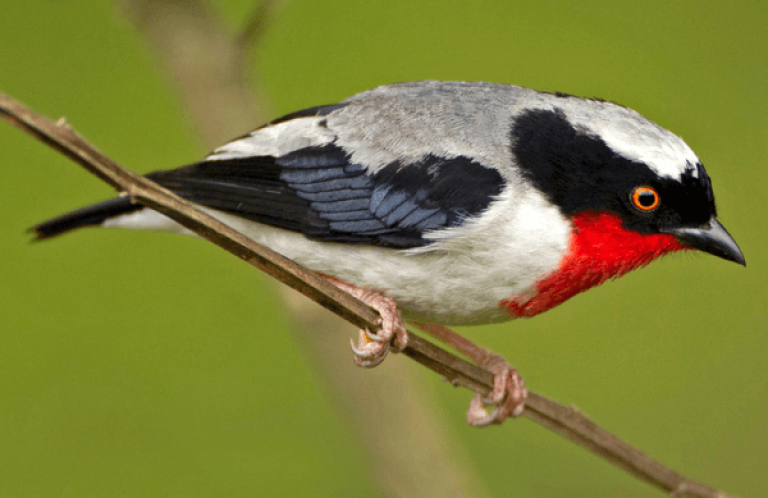As Avian Influenza Outbreak Spreads, Vigilance and Bird-friendly Actions Needed

Bald Eagle by sursad/Shutterstock
This is a developing story and will be updated periodically as more information becomes available.
UPDATE: July 21, 2022 The current outbreak of avian influenza continues and is having devastating impacts on birds in the U.S. and around the world. As of July 21, 2022, the Centers for Disease Control (CDC) has confirmed avian flu infection in 1,890 individual wild birds (and more than 40,000,000 domestic poultry affected) in the U.S. representing more than 100 species in 44 states. However, the actual infection rate and death toll are almost certainly much higher, as not every bird is tested. For instance, the majority of Wisconsin's Caspian Tern breeding population died this summer, with many of the birds exhibiting avian flu symptoms. More than 1,200 terns died, but biologists only confirmed infection in seven individuals. A laboratory backlog is also limiting the number of wild birds tested.
“Wild bird losses from avian flu are tragic and this year's outbreak appears to be one of the worst, if not the worst we've ever seen,” said Mike Parr, American Bird Conservancy President. “It underlines the need to step up conservation measures for birds through habitat conservation to offset some of the losses to disease.”
Meanwhile, the threat to human health remains low — the CDC has only reported a single human case to date. American Bird Conservancy continues to recommend that everyone follow the direction and guidance of local agency officials, who can provide localized advice, and consider taking action at home by following the tips listed below.
(April 20, 2022) First identified in December 2021 when domestic chickens on the island of Newfoundland, Canada tested positive, a strain of bird flu known as highly pathogenic avian influenza (HPAI) has now spread to wild birds in more than 30 U.S. states and every Canadian province. Waterfowl, raptors, and vultures seem particularly susceptible. As of April 20, 2022, more than 750 wild birds representing more than 40 species — including Snow Geese, Bald Eagles, and Snowy Owls — had been impacted. This year's outbreak is more effective at infecting and killing wild birds than the last outbreak in 2014 and 2015, and American Bird Conservancy (ABC) is asking people to take action to limit the disease's spread.
“There's a lot we don't yet know about this outbreak of avian flu, but with billions of wild birds moving across the continent on migration, we're asking everyone to take some common-sense steps,” said Mike Parr, President of American Bird Conservancy.
The U.S. Department of Agriculture's (USDA) Animal and Plant Health Inspection Service is currently keeping track of where outbreaks in wild birds are occurring across the U.S. You can use this resource to check whether your home is near an outbreak. (Note: there is a very low risk of infection for the general human population, according to the Centers for Disease Control and Prevention). If there is an outbreak in your area, follow the direction and guidance of local agency officials, who can provide localized advice. Such safety precautions are particularly important if you raise chickens or have any other kind of pet bird on your property.
Here is additional information from ABC on how you can help birds during the current avian flu outbreak: wherever you are and whatever your circumstances.
- If an avian flu outbreak is reported in your area, consider pausing any feeding of birds at least until this wildlife morbidity/mortality event is over.
Removing bird feeders is typically recommended to reduce any disease spread among groups of birds. Given that the breeding season is starting in the U.S. and Canada, many “feeder” birds are now more reliant on invertebrates like caterpillars and grasshoppers. During the breeding season, chicks need protein for rapid growth; hardworking parent birds also benefit from a solid dose of insect- and spider-based protein.
You can still help birds coming to your yard. Creating a backyard that supports birds and other wildlife luckily isn't dependent on feeders. Incorporating native plants into your yard is a great option at any time. Many native plants provide naturally grown food, including berries and nectar, and also attract invertebrates that birds seek. If you maintain native trees, shrubs, and vines on the landscape, you will also encourage birds to nest in your yard or stop for a quick rest during spring or fall migration.
Make sure any plants you use are selected with care. Do not assume that nurseries will only sell you native and/or non-invasive plants.
Don't use chemicals that may harm insects, birds, and other wildlife. Birds eat invertebrates and feed many of them to their young. Just as you wouldn't want children or pets to ingest yard chemicals, the same should hold true for neighborhood wildlife.
- If you find a dead bird and would like to report it, do not pick it up and check with your state health department or wildlife agency for reporting information specific to your area.
Please note that the CDC and USDA are closely monitoring this situation. The CDC also has a number to call if you see unusual behavior in any birds near your home. Always avoid handling wild birds unless absolutely necessary. Only handle them if you have the proper permits and are aware of proper handling techniques.
- If using a bird feeder or bird bath, maintain them with regular washes using a 10-percent bleach solution (one part bleach mixed with nine parts water), followed by a water rinse, then complete air-dry.
"Bird feeders are basically the kitchens and dining rooms of our backyards,” said Jordan Rutter, ABC's Director of Public Relations. “It would be hard for us to imagine not washing our dishes. We should think of bird feeders and bird baths in a similar way.”
- Keep pets (including pet birds) away from sick or dead wild birds as a standard precaution.
This advice is relevant at any time. Practice and advocate for treating cats like dogs — that is, providing safe and enriching places for pet felines to live indoors full time or supervised and contained outdoors using a harness, backpack, or “catio.” Learn more about other simple actions you can take to protect birds on our Cats Indoors page. If you are a cat owner, you can also pledge to keep your pet responsibly contained.
“Regardless of this outbreak of avian flu, it's a great time to learn about other ways to help birds,” said Parr, “given that we've lost nearly 3 billion birds from North America since 1970.”
- Protect birds from glass collisions.
Collisions with glass are a major human-caused threat to birds, killing up to 1 billion annually in the U.S. alone. Because birds see differently than we do, glass poses a serious risk, especially when vegetation or other habitat is reflected in windows. From tape to screens and films, there are many effective, easy-to-install, and inexpensive home solutions to help reduce bird-window collisions. Please visit and share: www.birdsmartglass.org.
- Provide snags for clear sight lines.
You can “plant” a large dead branch in your garden or leave some dead branches in living trees to provide lookout points for birds. You may be surprised how quickly hummingbirds, flycatchers, and other birds adopt these “stick” perches, which help them watch for predators, as well as competitors and food sources.
- Support birds from inside, too.
You can support birds whether you have a yard or not. Consider purchasing bird-friendly coffee, “reduce, reuse, recycle” to help birds from backyard visitors to seabirds in the middle of the ocean, and use your voice by asking your elected officials to support bird conservation efforts.
For more about ABC's top tips to help birds, read how our staff takes action at home too.
###
American Bird Conservancy is a nonprofit organization dedicated to conserving wild birds and their habitats throughout the Americas. With an emphasis on achieving results and working in partnership, we take on the greatest problems facing birds today, innovating and building on rapid advancements in science to halt extinctions, protect habitats, eliminate threats, and build capacity for bird conservation. Find us on abcbirds.org, Facebook, Instagram, and Twitter (@ABCbirds).
Media Contact: Jordan Rutter, Director of Public Relations| jerutter@abcbirds.org | @JERutter


















































